For those travellers who love the mystery of the unknown, Discover Sri Lanka with the remote Rajagala monastery complex holding ancient sites containing prehistoric ruins, monuments, and artefacts, including ancient stupas.
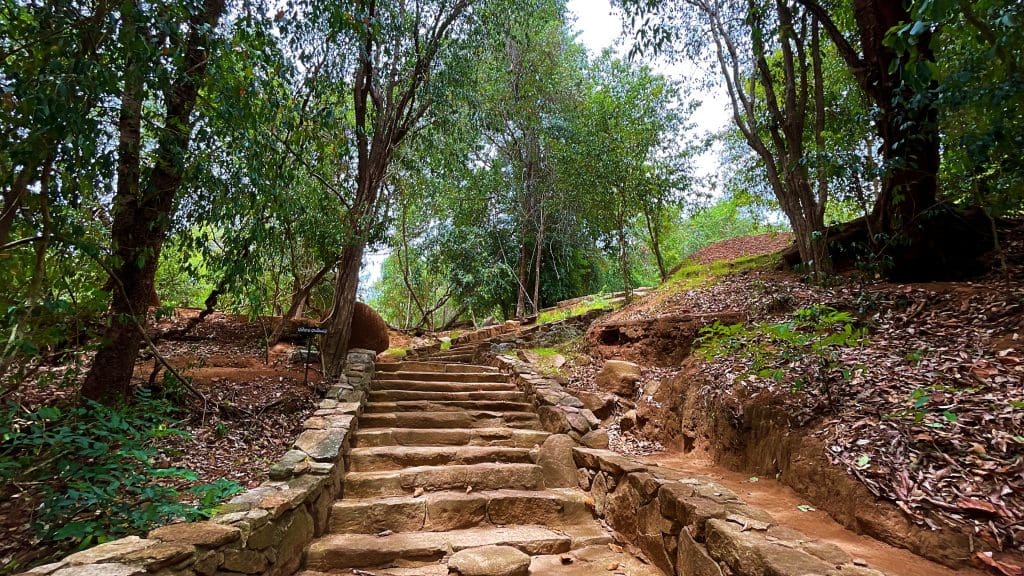
Buddha. Who is Buddha? A wandering ascetic. Spiritual teacher. Enlightened soul. Meditator. Monk. Listener. Speaker. Seeker. Giver. What do I hark back on when I think about Buddha? How do his words implore me to pursue a transcendent state devoid of suffering, desire, and a sense of self?
I didn’t know what it was, that I was looking for, but I knew that I wouldn’t find it by staying in one place. So I kept travelling, and eventually, I found myself in pearl-hued Mahiyangana, walking on the same sand-covered path that Buddha once took to get here after he acquired enlightenment. It was his first trip to Sri Lanka in 1 B.E. or 528 B.C.
I then crossed hairpin bends and perpendicular, paddy-fringed roads to Nagadipa, in the north, and thought to myself, “This must be the road that Buddha took in 5 B.E. or 523 B.C.” I decided to take the road and see for myself. Rung by reverence, and of lighted lamps, the air was thick with the smell of incense and spices, and the sound of music and laughter filled the air. I could imagine Buddha walking the same path. I could feel the serenity that he must have felt on his journey. I knew that I was on the right path.
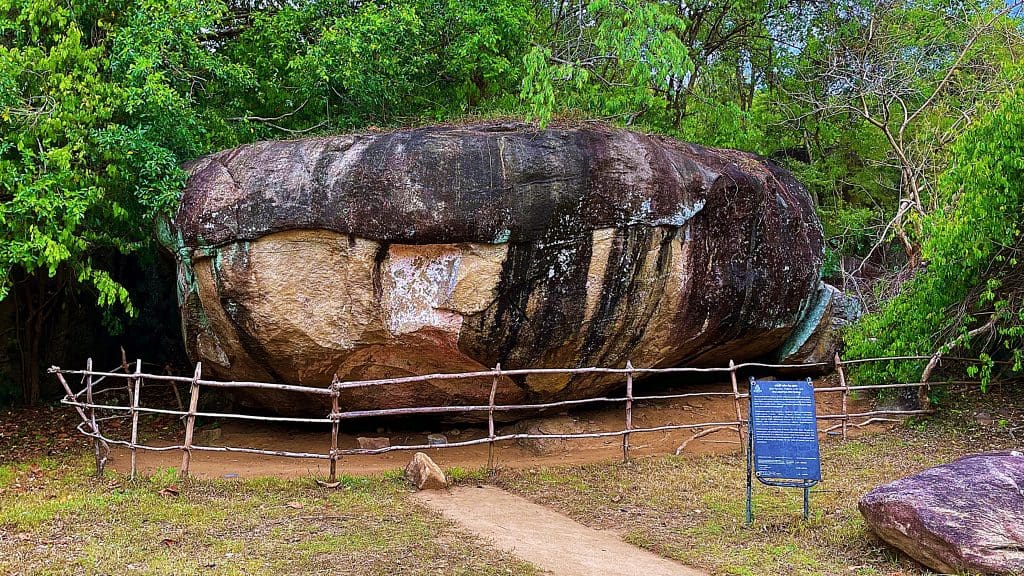
I returned to Colombo after a few days, but, before I could leave the island, I went to Kelaniya Raja Maha Viharaya, which Buddha visited in 9 B.E. to deliver a Dharma speech on request of king Maniakkika. It was his third visit to Sri Lanka and the last one too. However, at the end of this trip, Buddha realised that Lanka would be the country where his faith would be most revered.
Despite the fact that Buddha lived many centuries before us, his philosophy has reached us through a multitude of channels. Because his teachings are based on the fundamental notion that enlightenment is a continuous process rather than a fleeting flash, his concepts are timeless and have a profound impact.
So I stepped back in time at Kelaniya, eager to explore everything Buddhism had to offer! I soon found myself in front of the golden statue of Buddha. I knew that I was in the presence of something special. I closed my eyes and said a silent prayer. When I opened my eyes, I knew where I was going next.
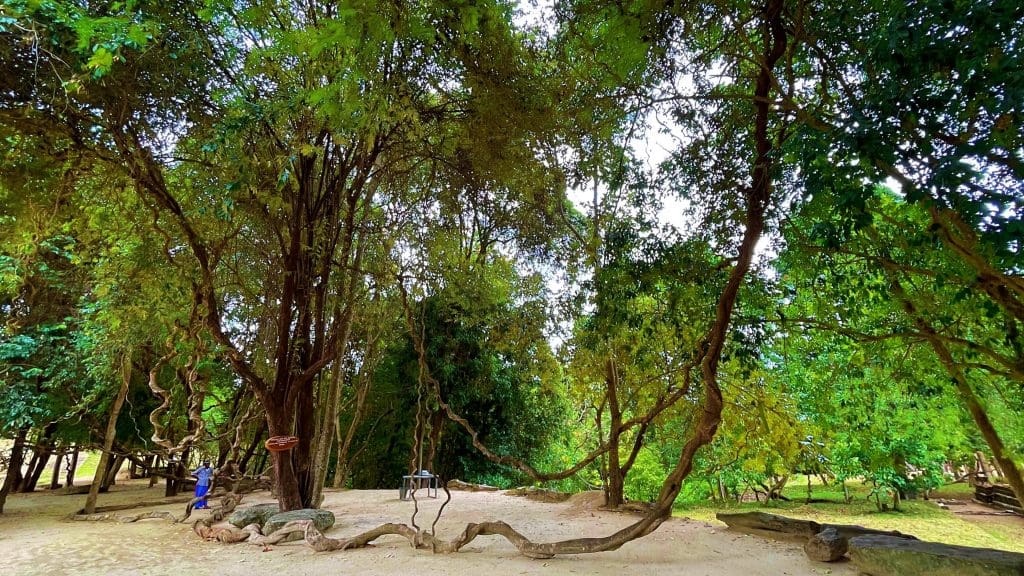
Rajagala (The Monarch’s Rock)
On my fourth visit to the island, I followed the road to Mihintale, a mountain peak near Anuradhapura, where Buddhist monk Mahinda met King Devanampiyatissa to establish Buddhism in Sri Lanka.
The 1,600-acre Rajagala archaeological complex, second only to the Mihintale monastery in Anuradhapura, was my final destination, and I was blown away by its sheer size and scope.
This enormous site contains approximately 600 prehistoric ruins, monuments, and artefacts, including ancient stupas. It’s an incredible place to explore, and I was lucky enough to find answers to many of my questions about the history of Buddhism here.
It was a sunny day, but Rajagalathenna felt especially isolated. The closest hub is Ampara, but it takes an hour to get there. From Polonnaruwa, we took the third exit onto Maithripala Sirisena Mawatha and travelled to the remote settlement of Maha Oya along the Chenkaladi-Badulla highway.
The ancient site is located in a knockabout area and was challenging to get to. But what mystery does Rajagalathenna hold? When the King was alive, Rajagala was “Girikhumbila,” as the mountain range resembles a sleeping crocodile from a distance. Only the activity centre of the forest, which covers a fairly large part of the remains, was divested in 1890 to restore the monuments.
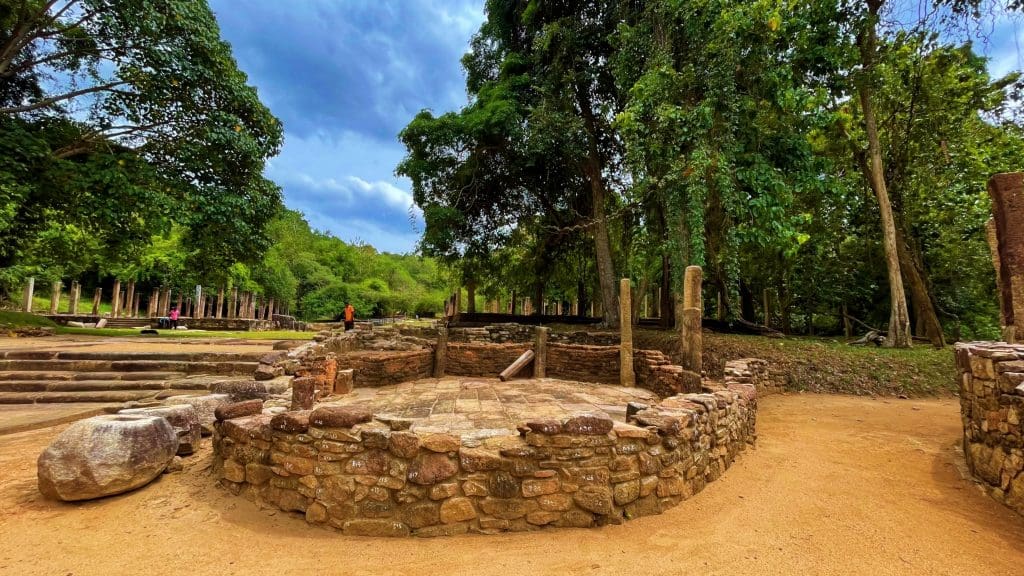
However, the unequivocal monastery of Rajagala, hidden in the backcountry, was snappily forgotten because there were more significant literal places around. Following 15 centuries, the monastery complex was completely consumed by the wilderness, only to be rediscovered in the 1940s by renowned archaeologist Senarath Paranavithana.
The air was thick, with anticipation as we made our way up the mountain. My heart was pounding in my chest as I thought about all the remarkable artefacts I was about to see. My guide, who was leading the way, seemed to sense my excitement and started chatting away about the history of the mountain. “You know, there used to be four different paths up to the plateau from all cardinal directions. But only two have been discovered so far.”
The main road splits into two directions at the peak; one leads to the numerous ruins and monuments on the northern slope, the other to the eastern slope across a large rock boulder. It took us a while to move from boulder to boulder through the forest. A longer path with stairs is built to the first one, which connects to parking areas at the foothill. Either climb will take you more than an hour. The cars can drive to the office of the archaeological site.
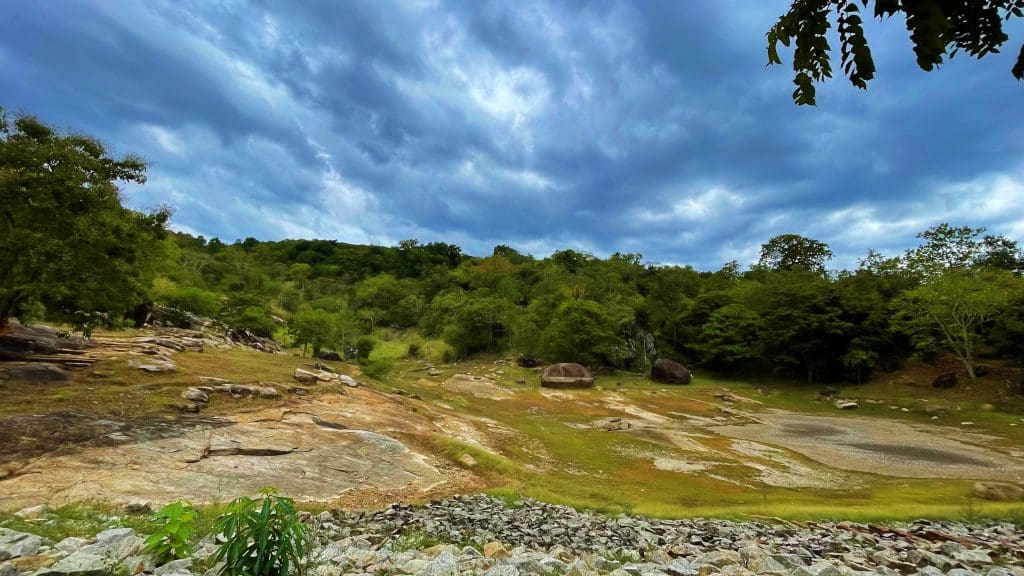
The ascent to the top from the office is a 1.5-kilometre natural track adventure through several ruins, Sangaramas buildings, pillars, guard stones, and moonstones. The only sound that drowned out the chirping birds in the background was that of my guide and my footsteps marching on the dry leaves.
As we rounded a corner, I caught my first glimpse of the ruins. My breath caught in my throat. It was even more incredible than I had imagined. Even before the first century BC, Bhikkhus dwelt here. I spent the next few hours exploring the ruins and learning about the people who had once called this place home.
Extensive rainforest remains have been excavated all across the mountain’s northern summit. According to an inscription, the Arahat Mahinda Thero, who introduced Buddhism to Sri Lanka, visited the Rajagalathenna Temple. Only two rock inscriptions mention the Arahat Mahinda Thero, one at this location and the other at Mihintale.
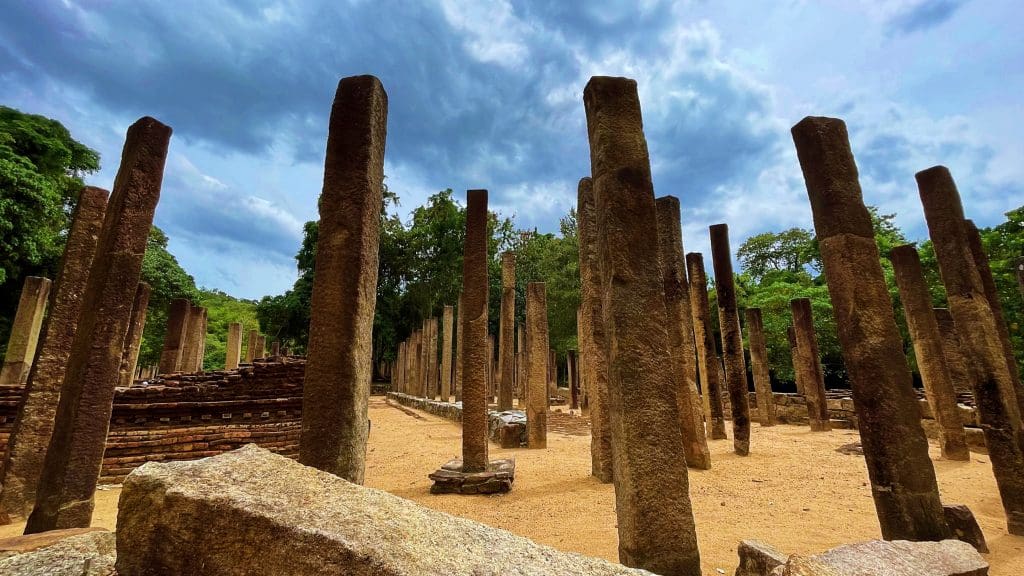
As mentioned on a nearby stone inscription, the ashes of Arahat Mahinda Thero and his adherent Itthiya Thera are interred in a stupa here. This makes Rajagalathenna an important pilgrimage site for Buddhists from all over the world. Likely, the ashes are still present because no excavation work has been carried out to confirm the ancient writings.
Caves of Ancient Scribblings
Rajagala monastery was once one of the most splendid monasteries in Ruhuna. It is on Thoppigala mountain, overlooking the rolling hills of the region. The monastery was supported, by King Kavantissa of Digamadulla and later by King Saddatissa and his son Prince Lajatissa. The monks who lived there were experts in the scriptures and offered guidance and wisdom to those who sought it.
The monastery complex was decimated many years ago, but the memories of its glory still live on. Today, the mountain that Rajagala monastery once stood on is still a place of pilgrimage for those who seek the wisdom of the ancients. The monastic bhikkhus live in drip-ledged caves further down the mountain. The interior walls, massive stone slabs, and granite boulders of the caves all have writings.
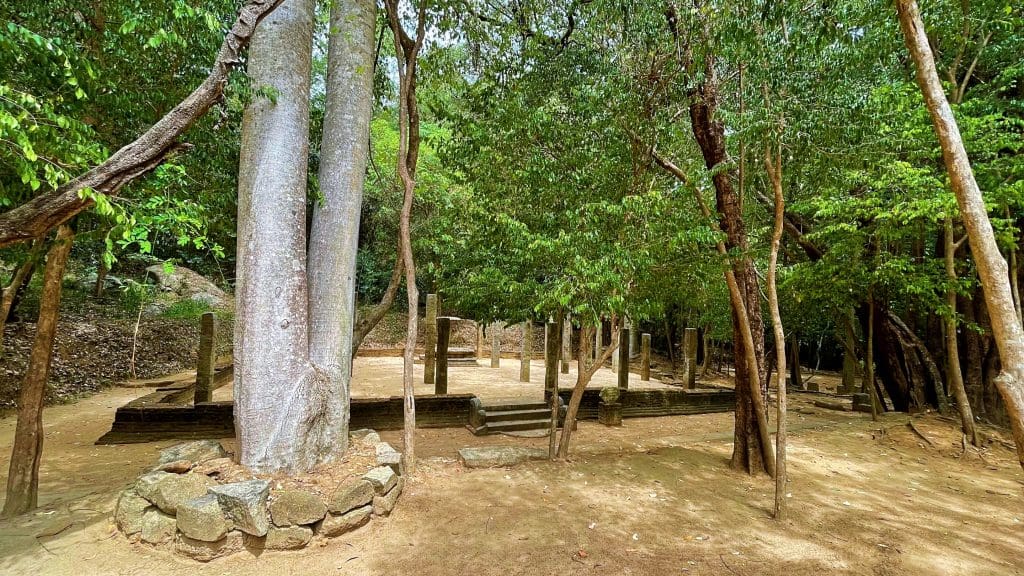
Some caves even retain their structural integrity. The bhikkhus who live in those caves spend their days in meditation, contemplating Buddha’s teachings. As I walked closer to the caves, I saw writings in a strange language. I was intrigued and asked if I could also see the artwork. The bhikkhu hesitated but then agreed.
He took me into one of the caves and showed me the plaster-covered walls. I asked one of the bhikkhus about it, and he told me that it is because those particular cave walls are too sacred for human eyes. Perhaps they hold Buddha’s journey to enlightenment in such detail and with such meaning. I was mesmerised by the beauty of it all. As I stood in front of those sacred cave walls, I felt a deep sense of understanding.
The largest cave, Cave 1, is thought to have been the main shrine for the ancient Buddhists who created this complex. The cave is decorated with a relief of the Buddha and has a large stupa in the centre. Cave 2 is smaller and less ornate, but it contains a statue of the Buddha that is believed to be one of the oldest in Sri Lanka. Caves 3 and 4 are even smaller, but they have some of the most well-preserved frescoes in the complex.
A great deal of thought and care went into the creation of this religious site. The caves were designed to be both beautiful and functional, and they have served as a place of worship for centuries.
18-foot-long, Tumbled Buddha Statue
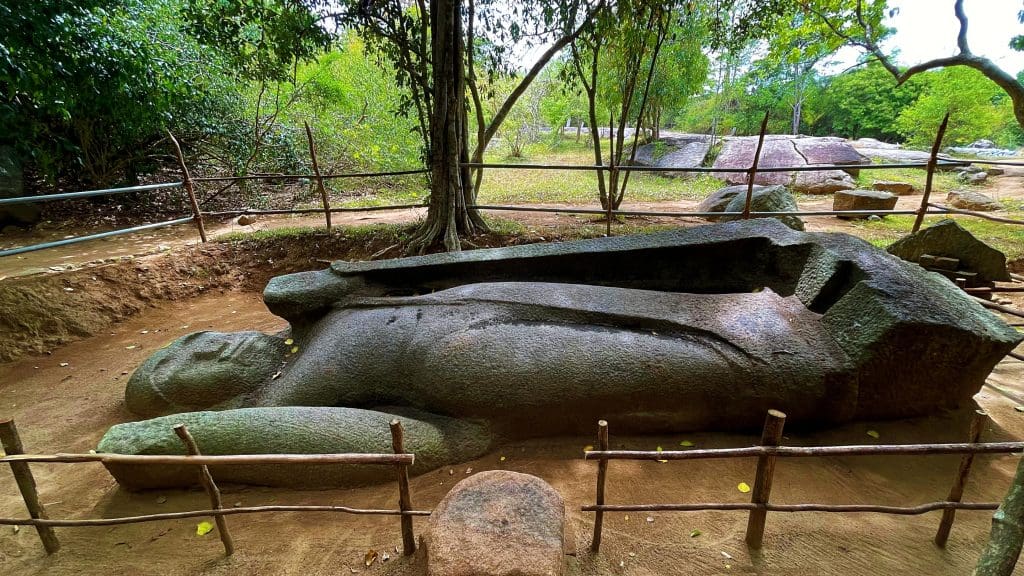
When we arrived at the 18-foot-long, stone-hewn, tumbled Buddha statue, I forgot all about my walking pangs. The stone Buddha statue loomed large as we approached it, its surface worn smooth from countless years of erosion. Archaeologists are still looking for where it may have once stood, but from where we were,
it was an impressive sight. As we stood there in silence, I could feel the weight of history bearing down on us. When Prince Lajjithissa took over the throne from his father, he decided to expand the existing site into a full-blown complex.
He offered the building to the monks and lavishly endowed the monastery. By the 9th century, the monastery itself was long gone, destroyed by the elements and time, with the fall of the Anuradhapura Kingdom. I’m so grateful to have had the chance to see it.
Mihindu Seya
My guide then took me to Mihindu Seya, a stone stupa housing the remains of Arahat Mahinda. This is the most significant landmark of the Rajagala monastery, with writings on the rock surface next to the stupa. Strangely, one of the two archaeological pieces of evidence of Buddha landing on the island is a stone inscription discovered close to the “Mihindu Seya,” which is where the remains of Arahat Mahinda and Arahat Uththiya are revered. In my imagination, after converting the island’s king to Buddhism, Buddha then took his leave.
But, as he did so, he placed his hand on the column and said, “This stone shall forever bear my image and remind all who see it of my great love for this island and its people.” And so it has been for centuries. The long stone column protruding from the peak originated in the sacred relic chamber, where the stone shadow is firmly anchored.
The stupa’s structure, a triangle-shaped grouping of identical rough stones, is unique to Sri Lanka and strangely reminds one of those seen in Tibet’s high elevations. Every day, pilgrims from all over the world come to gaze upon the stone column and reflect on the Buddha’s great love for all beings.
Rock and Stone Bowls
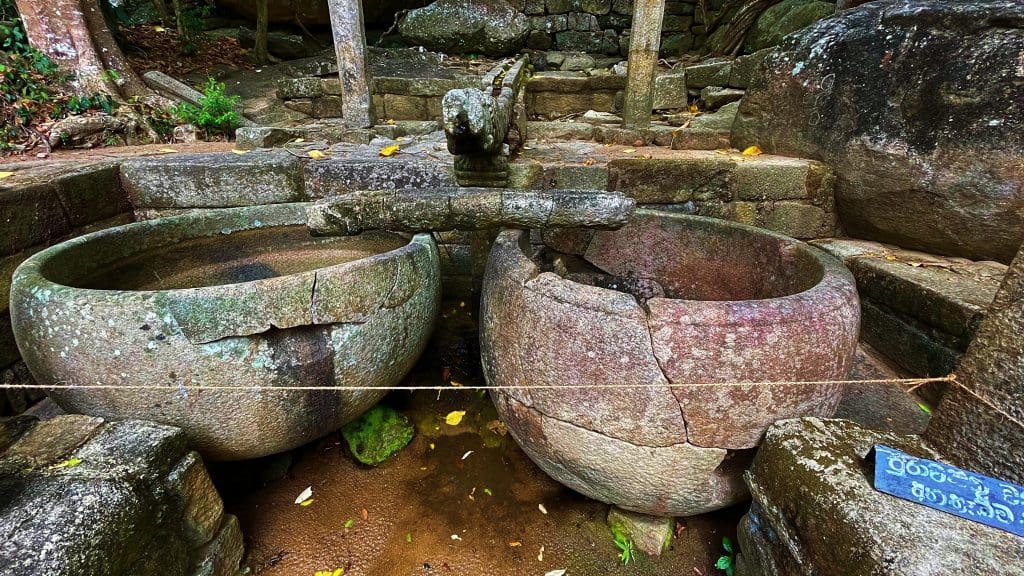
The guide showed me the etchings mentioning Arahat Mahinda and Itthiya and then took me to the additional inscriptions. We then strolled around the “Gal Pattaraya” (stone bowl), which would astound anyone visiting Rajagala. Buddha once said, “Drop by drop is the water pot filled.
Likewise, the wise man, gathering it little by little, fills himself with good.” But the engravings, the water and food bowls, and the cave ruins are all that’s left today. Gal Pattaraya had been used as containers for food during the almsgiving for meditating bhikkhus. The monks of Rajagala were some of the most serene and noble people of their time.
They lived a simple life devoted to meditation. Their days were spent in silence, broken only by the occasional meal or conversation. The monks were self-sufficient, using cutting-edge technology to create massive granite bowls that stored food and water.
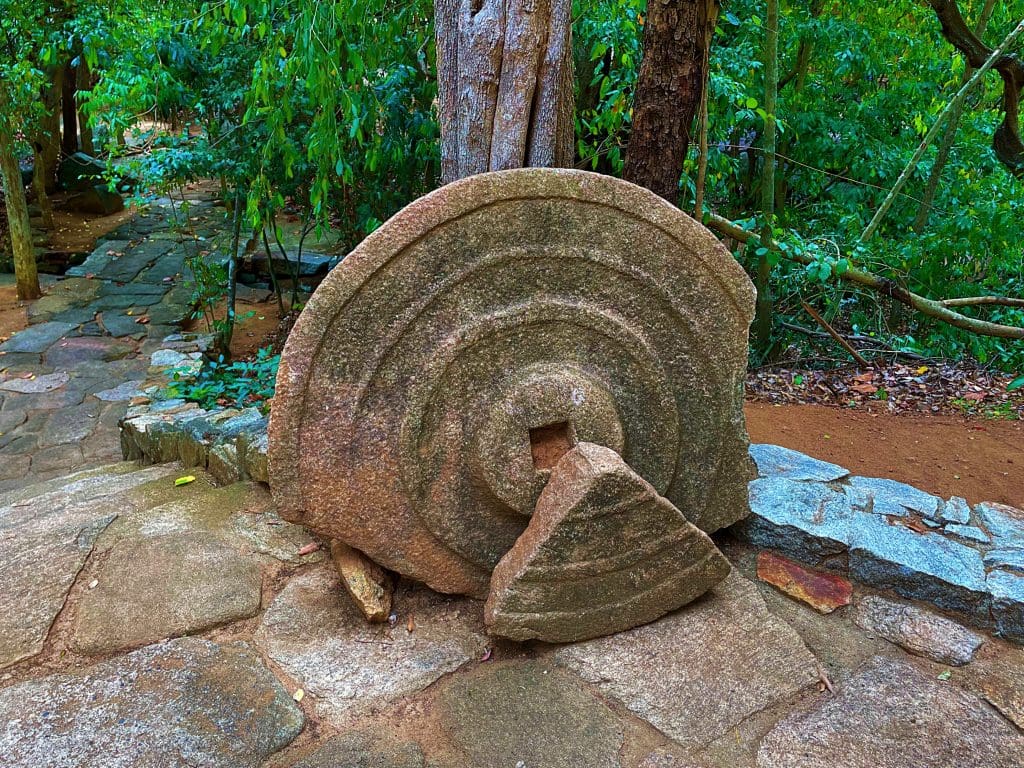
The bowls were the biggest ever discovered on the island and served as a reminder of the monks’ attainments. It’s extraordinary to think about how this place must have looked and sounded when it was full of life. It is now a mute relic of a bygone era.
Sitting in the refectory, I couldn’t help but notice the massive Dhorana tree next to me. It was easily the biggest tree I had ever seen, and it looked like it was as old as time itself. I was amazed that such a rare tree was in the Rajagalathenna region. Elk, deer, fishing cats, and crocodiles are common wildlife sightings in the Rajagalathenna region. And for avid bird watchers, the dense canopy provides plenty of opportunities to spot rarer birds.
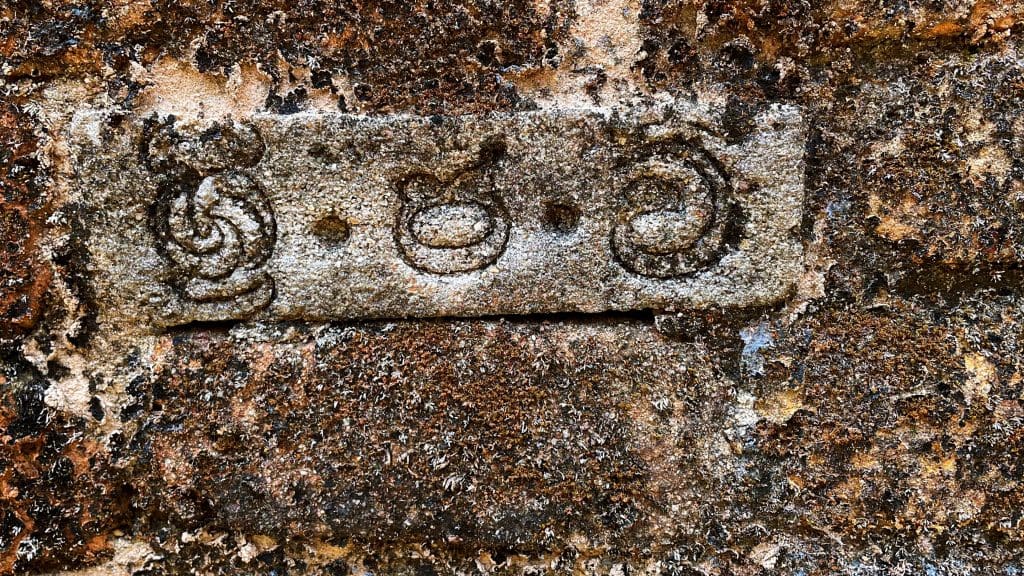
Ancient Buddhist Ruins
It is a hot, sunny day as I walk across the dusty plains towards the ruins. I can see the two stupas in the distance, rising out of the rubble like sentinels. The bigger one is thought to date back to the third century BCE, and the smaller one to the first, making them the island’s earliest buildings. The complex was deserted when King Mahasen, who persecuted Buddhism in the 2nd century, was in power.
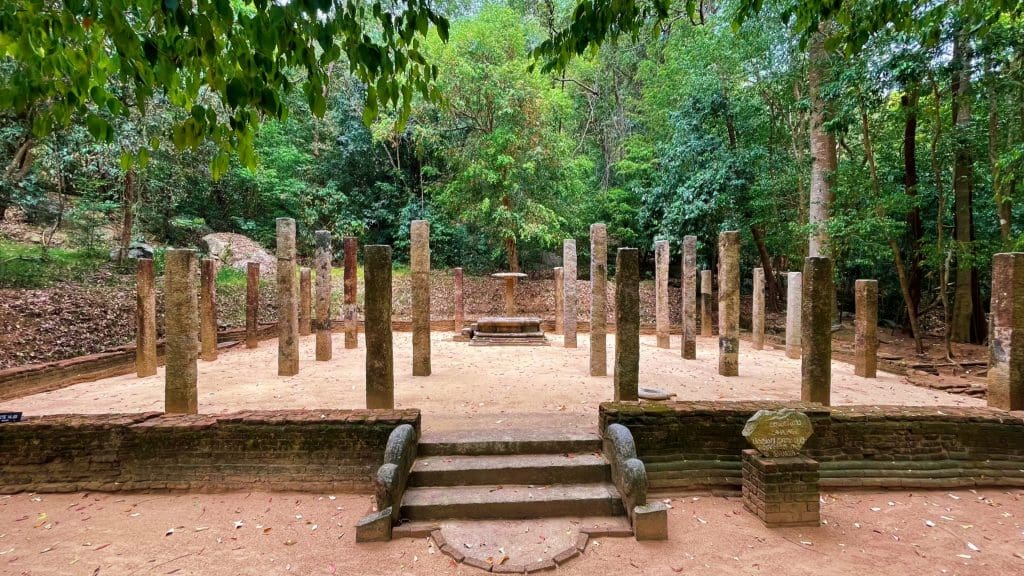
As I get closer, I see that the ruins are even more extensive than I thought. There are stone buildings, pillars, guard stones, and other intriguing artefacts spread out over a 2.5-square-mile area. I wander through the ruins, marvelling at the history that surrounds me. As I walk, I can’t help but feel a sense of sadness at the thought of all that was lost. But then I remember that the ruins are still here, and they are a testament to the strength and resilience of the human spirit.
The Saririka statue and the Kalanda Stupa
The Saririka statue is a beautiful and imposing sight at the Rajagala Buddhist ruins. This life-size granite statue illustrates a standing woman from the 12th century and has been well-preserved over the years. Another fascinating artefact at the Rajagala Buddhist ruins is the Kalanda stupa, dating back to the 3rd century BC, making it one of the oldest structures at the site. This brick stupa, decorated with beautiful carvings, is a testament to the skill of the ancient architects.
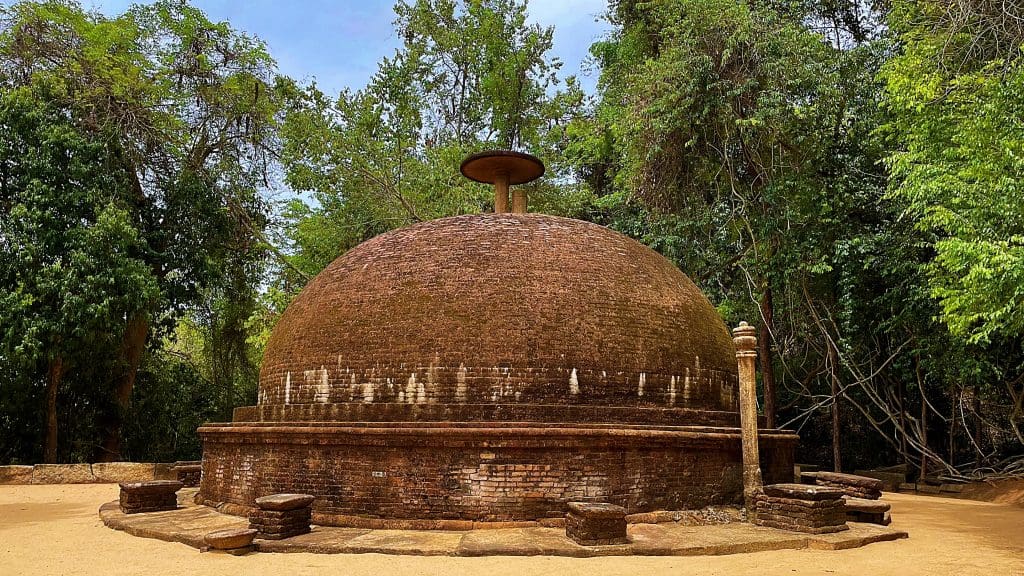
It was once, piled with the relics of the Buddha himself. But now, the stupa stands empty. Its once-mighty walls now stand crumbling and forgotten. What happened to the stupa? No one knows for sure. Some say that the relics of the Buddha were taken away by thieves, while others believe that they were destroyed during the time of the great persecution of Buddhists.
Whatever the case may be, the stupa still holds a certain power. For within its walls, one can still feel the presence of the Buddha. Both the Saririka statue and the Kalanda stupa are just a few of the many fascinating things to see at the Rajagala Buddhist ruins. If you ever have the chance to visit this site, you will not be disappointed!
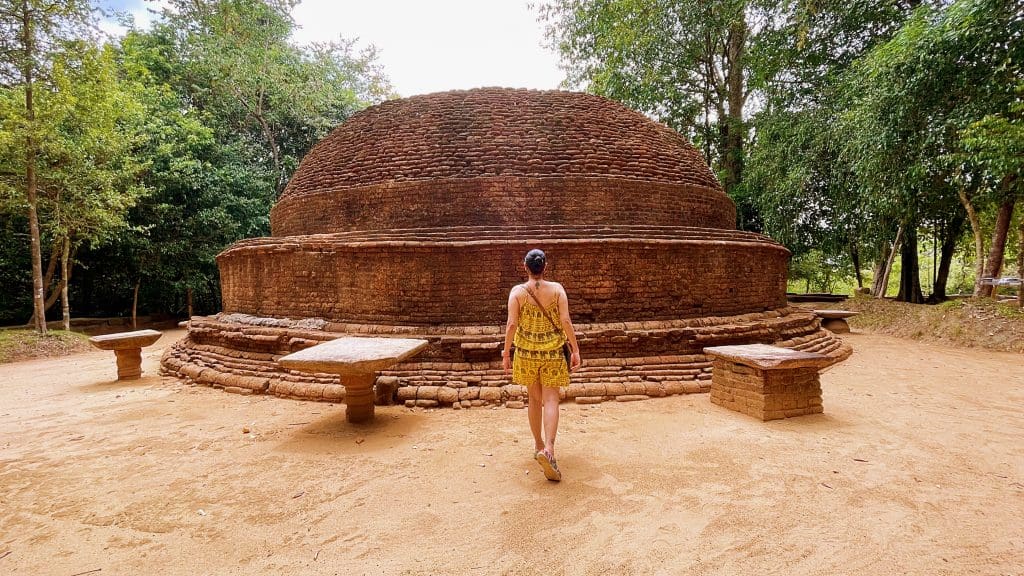
Rassaagala Mountain
Rajagala was once a thriving monastery, based on the remnants and ruins that can still be seen today, but along with the mountain, it would take a few days to explore it thoroughly. The stone structures discovered so far include stupas, monastic residences, assembly halls, a refectory, rock ponds, majestic promenades, a beautiful lake with stone steps leading down to it, an old water reservoir with a natural spring, wattle and daub separations still intact, and numerous stone inscriptions in early Brahimi Sinhalese.
The stupas with the shape of a parasol (chakra) rather than a more typical pinnacle at the top stand out as distinctive. They are a reminder of the monastery’s past glory and a testament to the skilled craftsmanship of the monks who built them. Today Rajagala mountain is a peaceful place where visitors can come to appreciate the beauty of nature and the history of this once-great monastery.
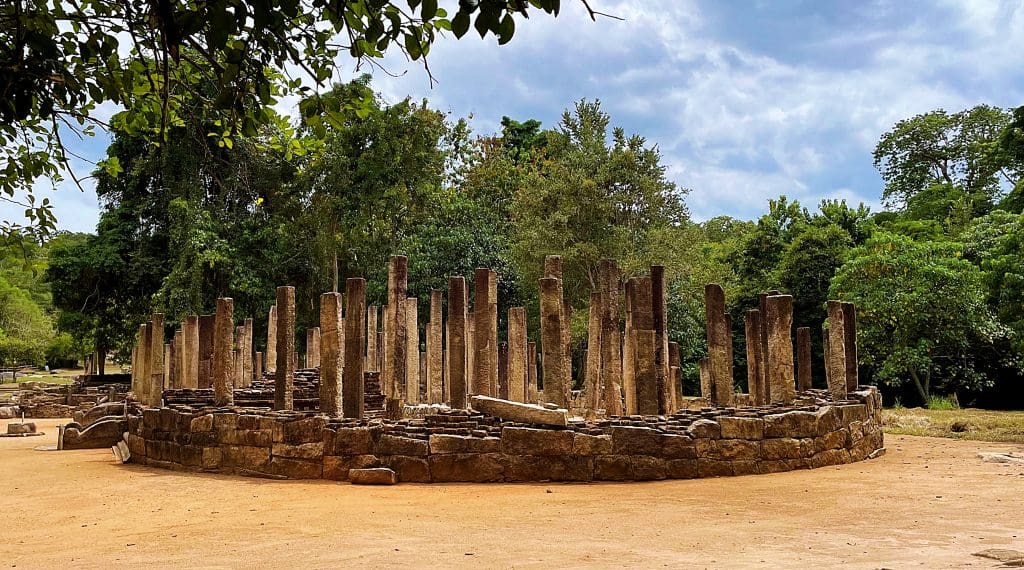
The first thing that strikes you about Rajagala is its area. Although it is not as large as some of the other ancient monastic complexes in Sri Lanka, it is still quite impressive. The second thing that hits you is its location. Nestled in the foothills of the Rassaagala mountain, Rajagala has one of the most beautiful landscapes in the world.
The third thing is its history. This site has been occupied by humans for over two thousand years! The fourth and final thing is its potential. Although extensively excavated, there is still a lot of work to be done. The site is massive, and there is a lot of ground to cover. If you are looking for a place to affirm your faith in our ancient heritage, then Rajagala is the perfect archaeological site for you.
A Homemade Lunch
The air was thick with humidity as we trudged through the mountain. Our final destination was the open-air Jantaghara (assembly hall), where I was feted to a homemade lunch on a banana leaf. A few signboards hung over the trees requesting visitors to preserve nature.
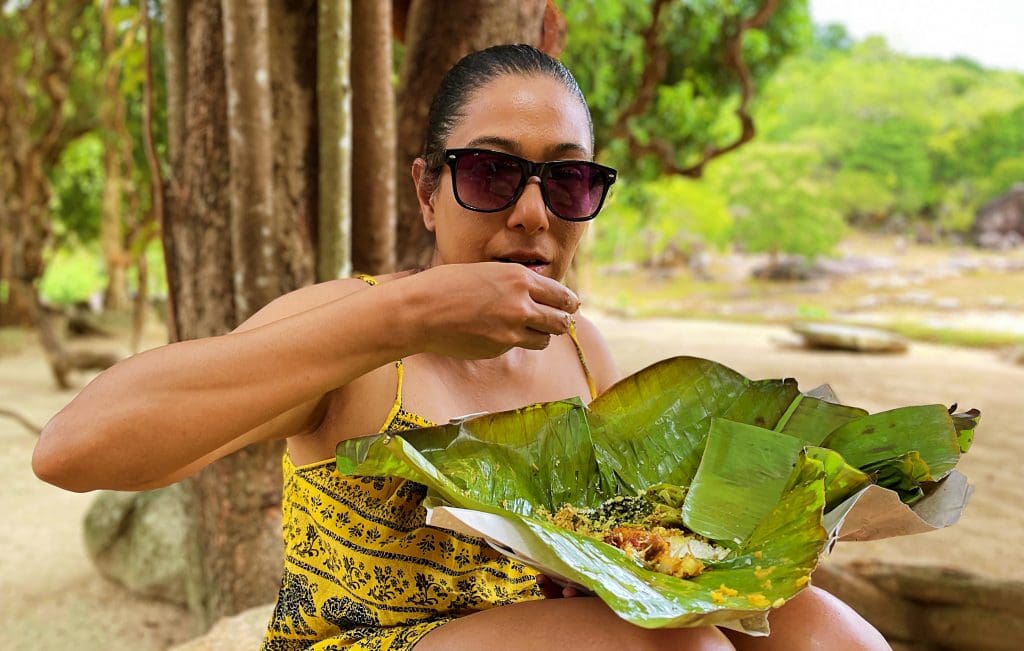
My guide offered me a leaf parcel containing rice, dhal curry, kunkun (a leafy vegetable), and fried tank fish.
I opened it and began to eat, savouring the delicious flavours of authentic Sri Lankan cuisine. As I ate, I couldn’t help but feel a sense of wonder at all the history and mystery that surrounds this place.
It was an incredible experience that I will never forget. And as Buddha says, “Those who cling to perceptions and views wander the world offending people.” As I left this place, I left my perceptions behind and returned more enlightened than before.
Author: Veidehi Gite is the founder of KrazyButterfly – ‘a mindful journal of curious travellers alike.‘ )
Read More: Latest



